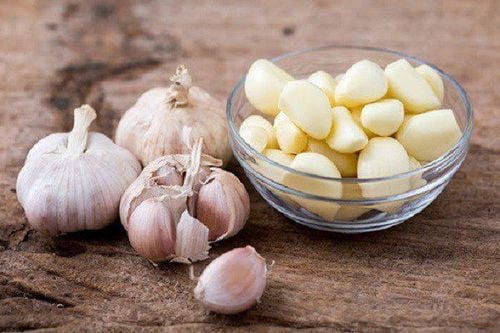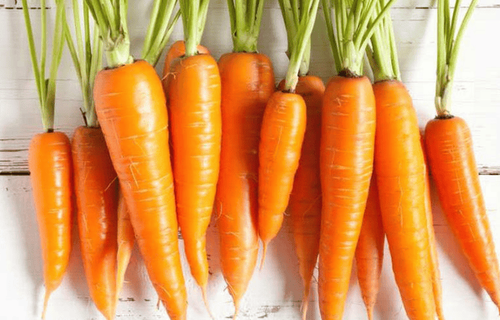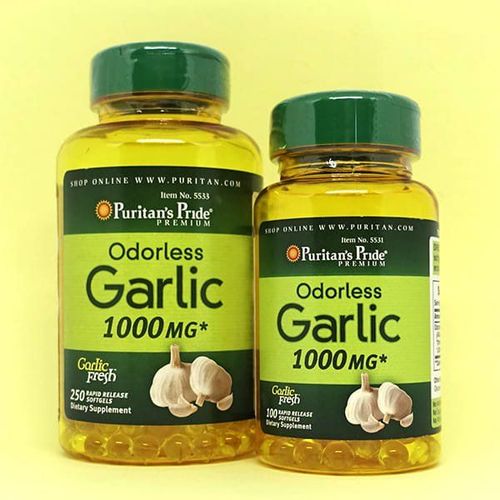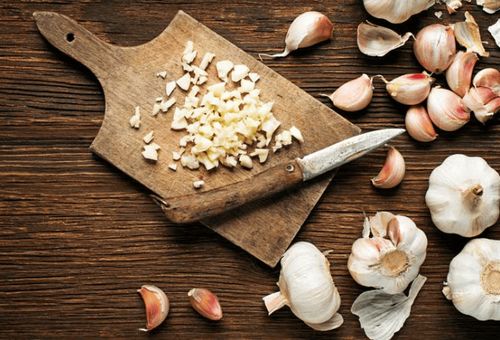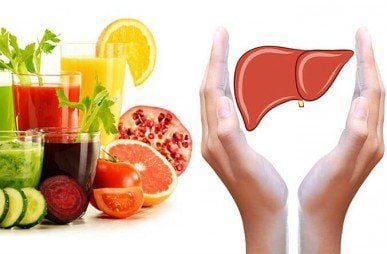This is an automatically translated article.
Vegetables are known by many people as healthy foods. Most vegetables are very low in calories but rich in vitamins, minerals, and fiber. However, some vegetables stand out more with proven health benefits, like fighting inflammation or reducing disease risk. So what are the best vegetables?
1. Spinach
Spinach is the top vegetable on the charts. Thanks to its impressive nutritional profile, it is considered one of the healthiest vegetables.
Just one cup (about 30 grams) of raw spinach gives you 56% of your daily vitamin A requirement, plus your entire daily vitamin K requirement, but contains only about 7 calories.
Spinach is also packed with antioxidants, which may help reduce the risk of chronic disease. One study found that dark green leafy vegetables like spinach are high in beta-carotene and lutein, two types of antioxidants that have been linked to a reduced risk of cancer. Also, another study done in 2015 found that eating spinach may be beneficial for heart health, as it can lower blood pressure.
2. Carrots
Carrots are a great source of vitamin A, providing 428% of the recommended daily value in just one cup (weighing about 128 grams).
Carrots contain beta-carotene, which is an antioxidant that gives carrots their orange color and may help prevent cancer.
On further research, the researchers revealed that, with each serving of carrots per week, there was a 5% reduction in the study participants' risk of prostate cancer.
Another study shows that eating carrots can reduce the risk of lung cancer in smokers. When compared with a group of people who ate carrots at least once a week, the group of participants who smoked but did not eat carrots had a three-fold increased risk of developing lung cancer.

Cà rốt là loại thực phẩm chứa nhiều vitamin A rất tốt cho sức khỏe
3. Broccoli or broccoli
Broccoli belongs to the cruciferous vegetable family. This food is rich in sulfur-containing plant compounds called glucosinolates, as well as sulforaphane. Sulforaphane has been shown to have a protective effect against cancer. In animal studies, sulforaphane was able to reduce the size and number of breast cancer cells, and at the same time, suppress tumor growth in mice. Besides, eating broccoli can also help prevent other types of chronic diseases. A 2010 animal study found that consuming broccoli sprouts may protect the heart from disease-causing oxidative stress by significantly reducing oxidative stress.
In addition to the ability to prevent disease, broccoli also contains many essential nutrients for the body. Just one cup (weighing about 91 grams) of fresh broccoli provides 116% of your daily vitamin K needs, 135% of your daily vitamin C needs, and also has an extra dose of folate, manganese, and potassium.
4. Garlic
The main active compound in garlic is allicin, which is a plant compound that has many health benefits.
Studies have shown that garlic can regulate blood sugar levels as well as promote heart health. In animal experiments, the researchers gave diabetic rats garlic oil or diallyl trisulfide, a component of garlic. Both allicin and diallyl trisulfide compounds in garlic lower blood sugar levels and improve insulin sensitivity.
Another study had participants with and without heart disease both eat garlic. At the end of the study, the researchers found that garlic was able to lower total blood cholesterol, triglycerides, and LDL cholesterol, but increase HDL cholesterol in both groups.
Garlic is also effective in preventing cancer. Researchers have demonstrated that allicin has a lethal effect on human liver cancer cells. However, further research is still needed to better understand the potential anti-cancer effects of garlic.
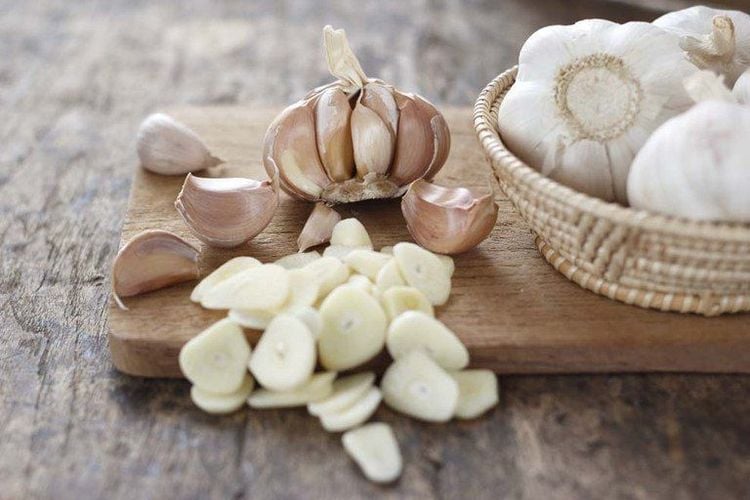
Tỏi có thể điều chỉnh lượng đường trong máu tốt cho sức khỏe tim mạch
5. Brussels sprouts
This type of broccoli has the same appearance as broccoli, but is much smaller in size. Brussels sprouts are a member of the cruciferous vegetable family and contain the same health-promoting plant compounds as broccoli.
Brussels sprouts also contain kaempferol, which is an antioxidant that may be especially effective in preventing cell damage.
An animal study showed that kaempferol protects against free radicals, which are responsible for oxidative damage to cells and play a part in chronic disease.
In addition, Brussels sprouts also work to enhance detoxification. Evidence shows that after eating Brussels sprouts, participants have a 15-30% increase in certain enzymes that control detoxification in the body, thereby reducing the risk of colorectal cancer.
Each serving of Brussels sprouts provides a generous dose of a variety of vitamins and minerals, including vitamin K, vitamin A, vitamin C, folate, manganese and potassium.
6. Kale
Similar to other green vegetables, kale is also high in nutrients and antioxidants.
One cup (67 grams) of fresh kale is packed with B vitamins, potassium, calcium and copper. Besides, this amount of kale also meets the entire daily requirement of vitamins A, C and K.
Kale may also be beneficial in promoting heart health due to its high antioxidant content. In 2008, a research team conducted an experiment on 32 men with high cholesterol test results and they were given 150ml of kale juice per day for 12 weeks. At the end of the study, test results for HDL cholesterol increased by 27%, LDL cholesterol decreased by 10%, and antioxidant activity was increased.
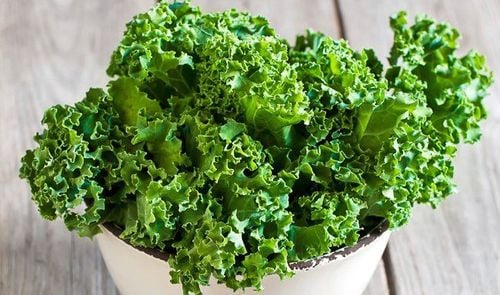
Cải xoăn chứa hàm lượng dinh dưỡng cao và chất chống oxy hóa
7. Green Peas
Peas are considered a starchy vegetable, so they are higher in carbs and calories than other non-starchy vegetables and can affect blood sugar when you eat one. large amounts.
However, green peas are extremely nutritious. One cup (about 160 grams) of cooked green peas will have 9 grams of fiber, 9 grams of protein and a variety of other nutrients like vitamins A, C and K, niacin, folate, riboflavin and thiamin.
Because of their high fiber content, peas support digestive health by boosting beneficial bacteria in the gut and promoting regular bowel movements.
8. Rainbow radish
Spinach is low in calories but packed with essential vitamins and minerals.
36 grams of fresh spinach contains 1 gram of fiber, 1 gram of protein and lots of vitamins A, C and K, manganese and magnesium, but only 7 calories.
In particular, this vegetable is known for its ability to prevent damage caused by diabetes.
In an animal study, this cruciferous vegetable extract was able to reverse the effects of diabetes by lowering blood sugar and preventing cell damage caused by disease-causing free radicals.
Other animal studies have shown that the antioxidant content in chard extract can protect the liver and kidneys from complications caused by diabetes.
9. Ginger
Some studies have shown ginger to have a positive effect on nausea. In a meta-review of 12 studies and with nearly 1,300 pregnant women enrolled, ginger significantly reduced nausea compared with placebo. Besides, ginger also has strong anti-inflammatory properties, so it is often used to treat disorders related to inflammation such as arthritis, lupus or gout.
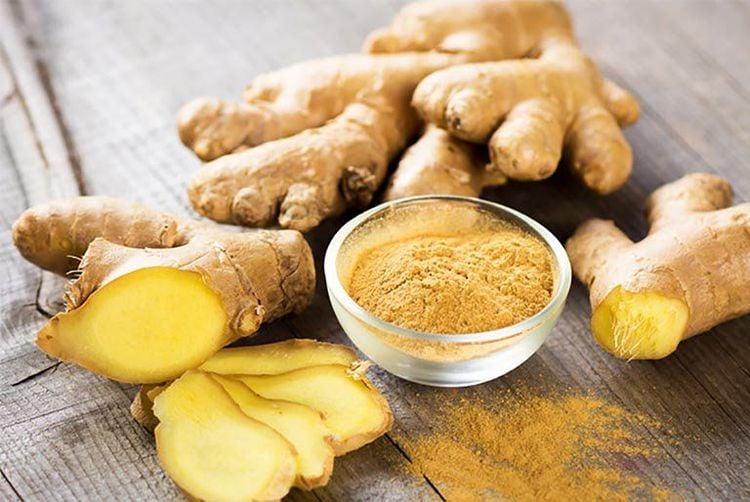
Gừng có tác dụng tích cực đối với chứng buồn nôn
10. Asparagus
This food is rich in vitamins and minerals. Just half a cup (90 grams) of fresh asparagus provides one-third of your daily folate requirement. In addition, this amount also provides a lot of selenium, vitamin K, thiamin and riboflavin.
Folate found in asparagus can protect from disease and help the fetus prevent neural tube birth defects during pregnancy. Several test-tube studies have also shown that asparagus may benefit the liver by supporting metabolic function and protecting the liver against toxicity.
11. Red cabbage
Red cabbage belongs to the cruciferous family and is also packed with antioxidants and other health-promoting properties. Just 89 grams of bright red cabbage contains 85% of the daily requirement of vitamin C and 2 grams of fiber.
In 2012, a team of researchers conducted an experiment by feeding mice a diet designed to raise cholesterol levels and increase plaque buildup in the arteries. These mice were then given an extract of anthocyanins from red cabbage. The results showed that red cabbage extract could prevent elevated cholesterol levels in the blood and protect against damage to the heart and liver.
12. Sweet potatoes
One medium-sized sweet potato will contain 4 grams of fiber, 2 grams of protein and large amounts of vitamin C, vitamin B6, potassium and manganese.
Sweet potatoes also contain a lot of vitamin A, also known as beta-carotene, so just one sweet potato has 438% of the daily vitamin A requirement that the body needs. Getting beta-carotene from foods has been shown to significantly reduce the risk of certain types of cancer, for example lung and breast cancer.
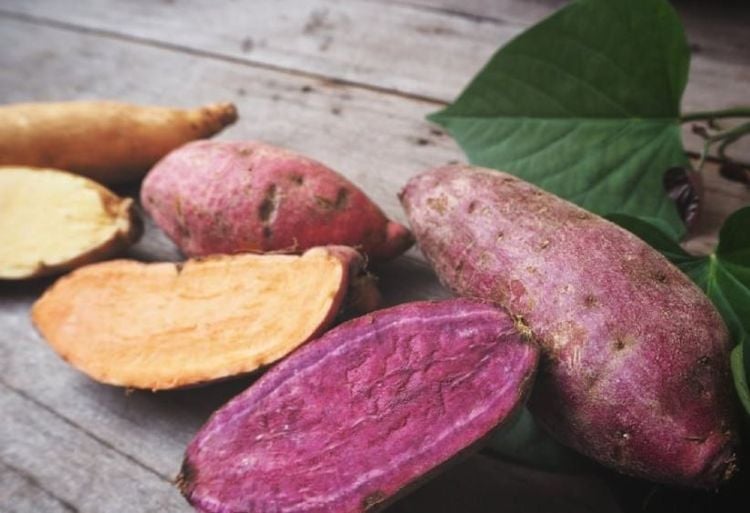
Khoai lang cũng chứa lượng lớn các vi chất khác nhau tốt cho sức khỏe người dùng
13. Cabbage
190 grams of cooked collard greens contain 5 grams of fiber, 4 grams of protein and 27% of daily calcium needs.
In fact, collard greens are one of the best plant-based sources of calcium. Getting enough calcium from plant sources can promote bone health and has been shown to reduce the risk of osteoporosis.
Cabbage is also high in antioxidants, so it can even reduce the risk of some diseases. For example, people who ate more than one serving of collard greens per week had a 57% reduced risk of glaucoma.
14. Kohlrabi
Kohlrabi is a vegetable related to cabbage, which can be eaten raw or cooked.
Raw kohlrabi is high in fiber, with about 5 grams of fiber per cup (135 grams). Each cup also provides 140% of daily vitamin C for the body.
Studies have shown that the antioxidant content in kohlrabi has powerful effects against inflammation and diabetes.
When comparing different types of kohlrabi, research shows that red kohlrabi has almost twice the amount of phenolic antioxidants and should have stronger anti-diabetic and anti-inflammatory effects.
Please dial HOTLINE for more information or register for an appointment HERE. Download MyVinmec app to make appointments faster and to manage your bookings easily.
Reference source: healthline.com



